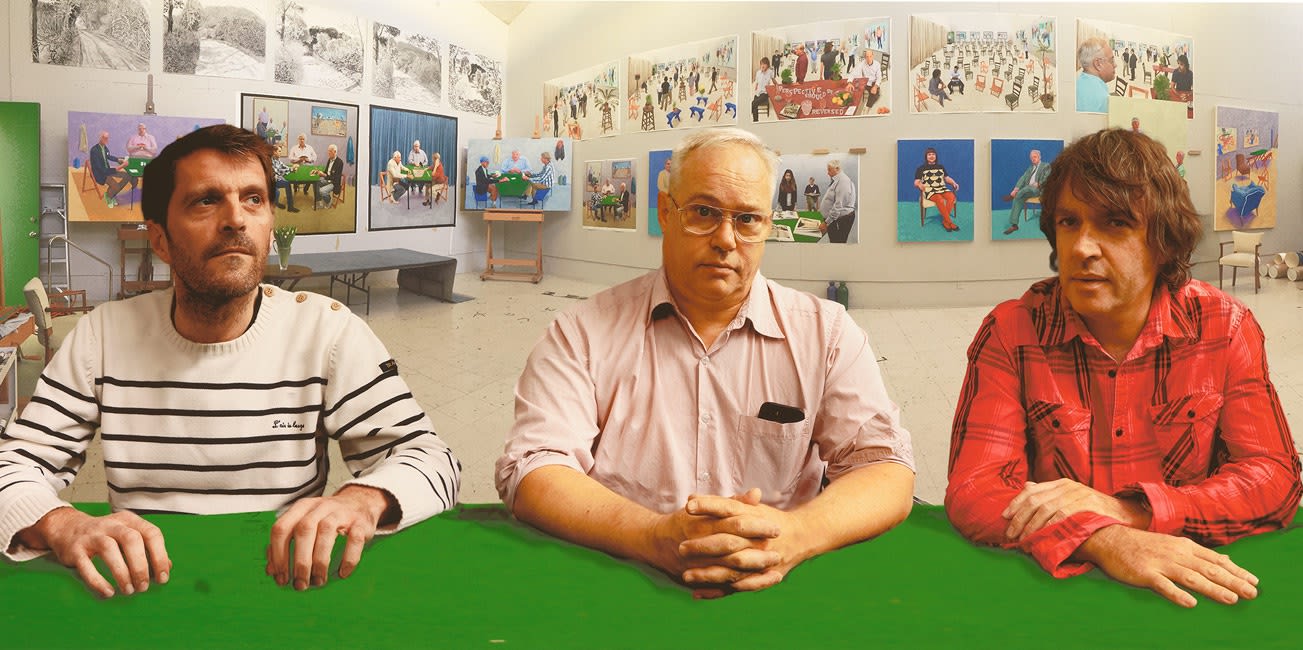
David Hockney
This work depicts Hockney’s Studio stalwarts: Jean-Pierre Goncalves de Lima, Jonathan Mills and Jonathan Wilkinson.
David Hockney's work has consistently involved experimentation with technology and a deep curiosity for new artistic methods. Hockney remains tirelessly committed to developing fresh approaches to image creation. In his 2015 exhibition 'Painting and Photography', he refers to the photographs as "photographic drawings." These images are created by capturing hundreds of close-range digital photographs and then skillfully stitching them together to form a unified composition with multiple vanishing points. This technique is reminiscent of his earlier photographic collages that used processed film prints, such as the well-known artwork "Pearblossom Hwy., 11-18th April, 1986 #2."
Both traditional and digital methods in Hockney's art serve to challenge perspectives and portray the passage of time within the visual space. However, this technique embraces the possibilities offered by the digital age, taking the sense of spatial dimension in these innovative images beyond that of their chemical counterparts. Hockney explains that each photograph has its vanishing point, resulting in a nearly 3D effect without requiring special glasses, thus opening up new possibilities for photography.
After spending a decade creating landscape works of the English countryside during his residence in East Yorkshire, Hockney returned to Los Angeles in 2013 and immersed himself in a prolific period of painting in his studio. These paintings, which included portraits of friends, studio assistants, visitors, and studio interiors, played a crucial role in inspiring and shaping the concept behind Hockney's new photographic series. Painting allowed him to determine the subjects and compositions, and more importantly, it provided him with the visual understanding of how to frame each photograph effectively.